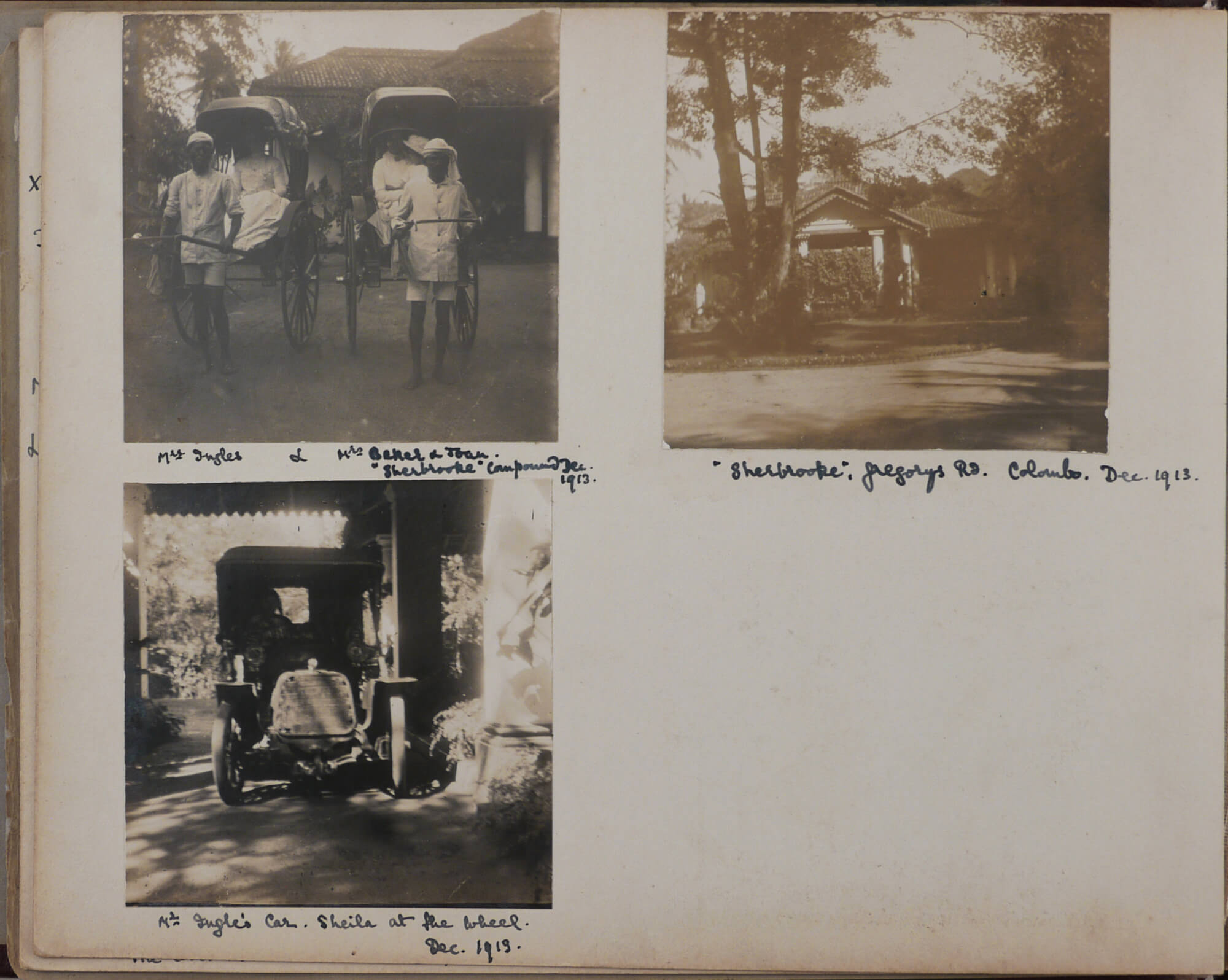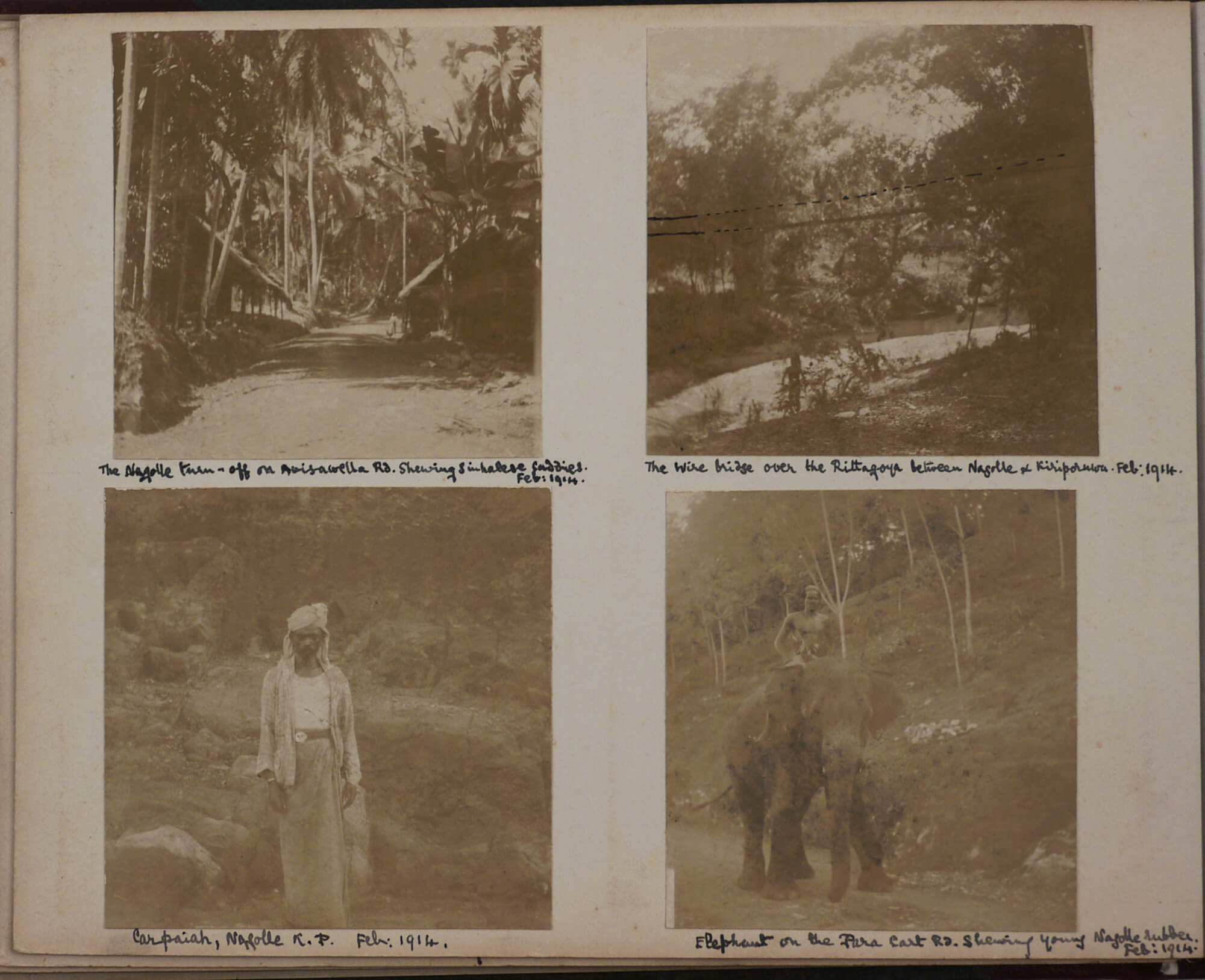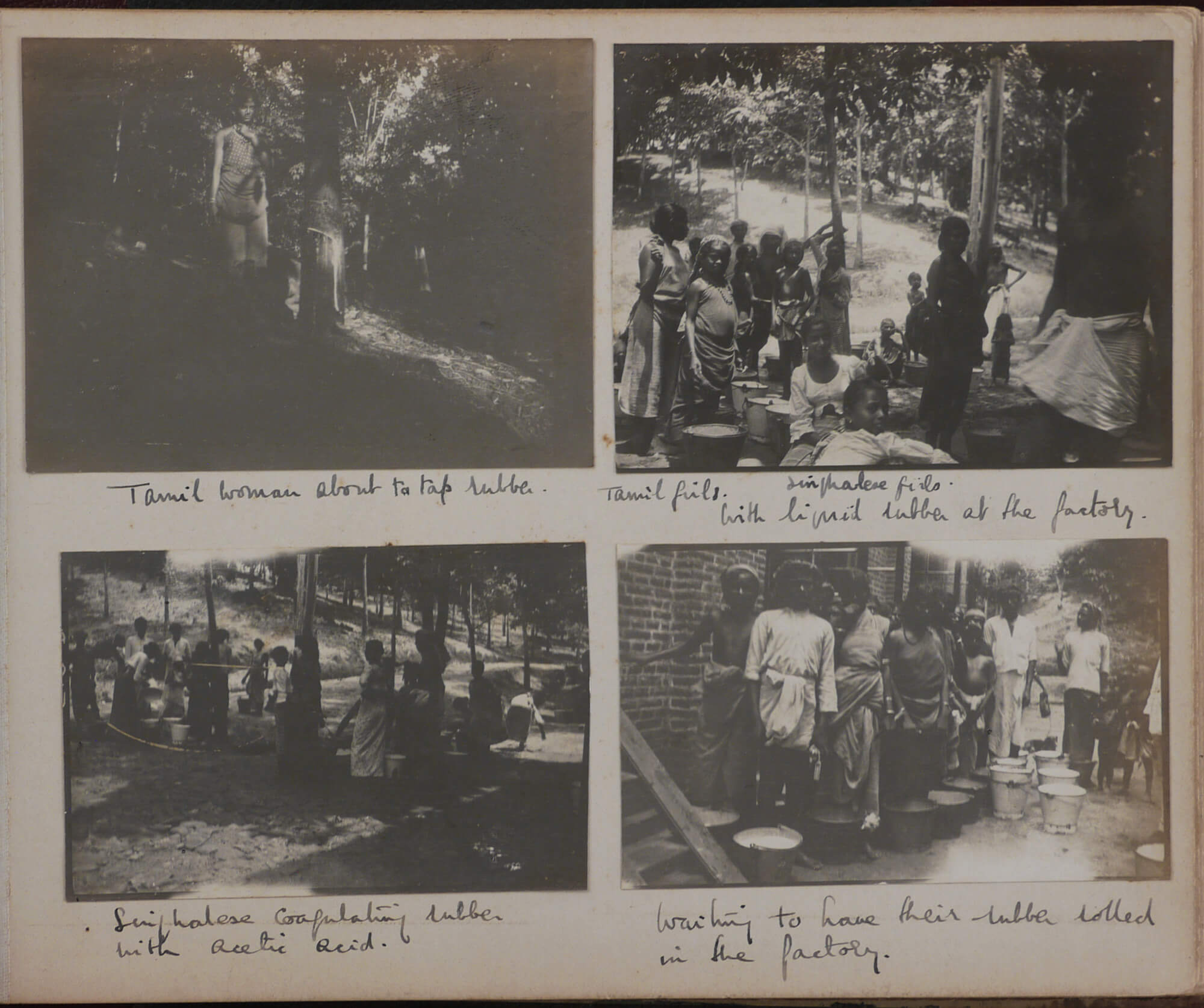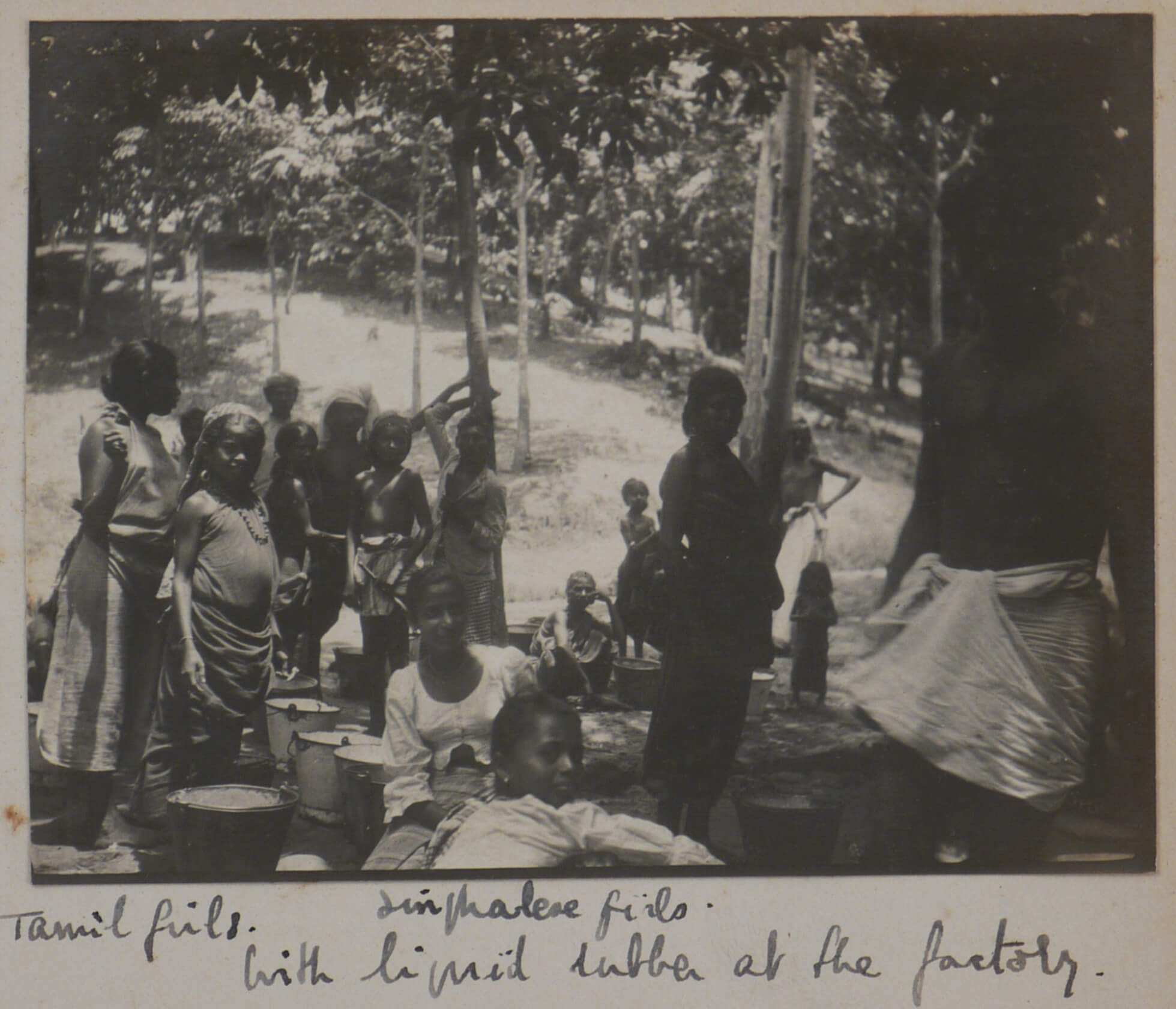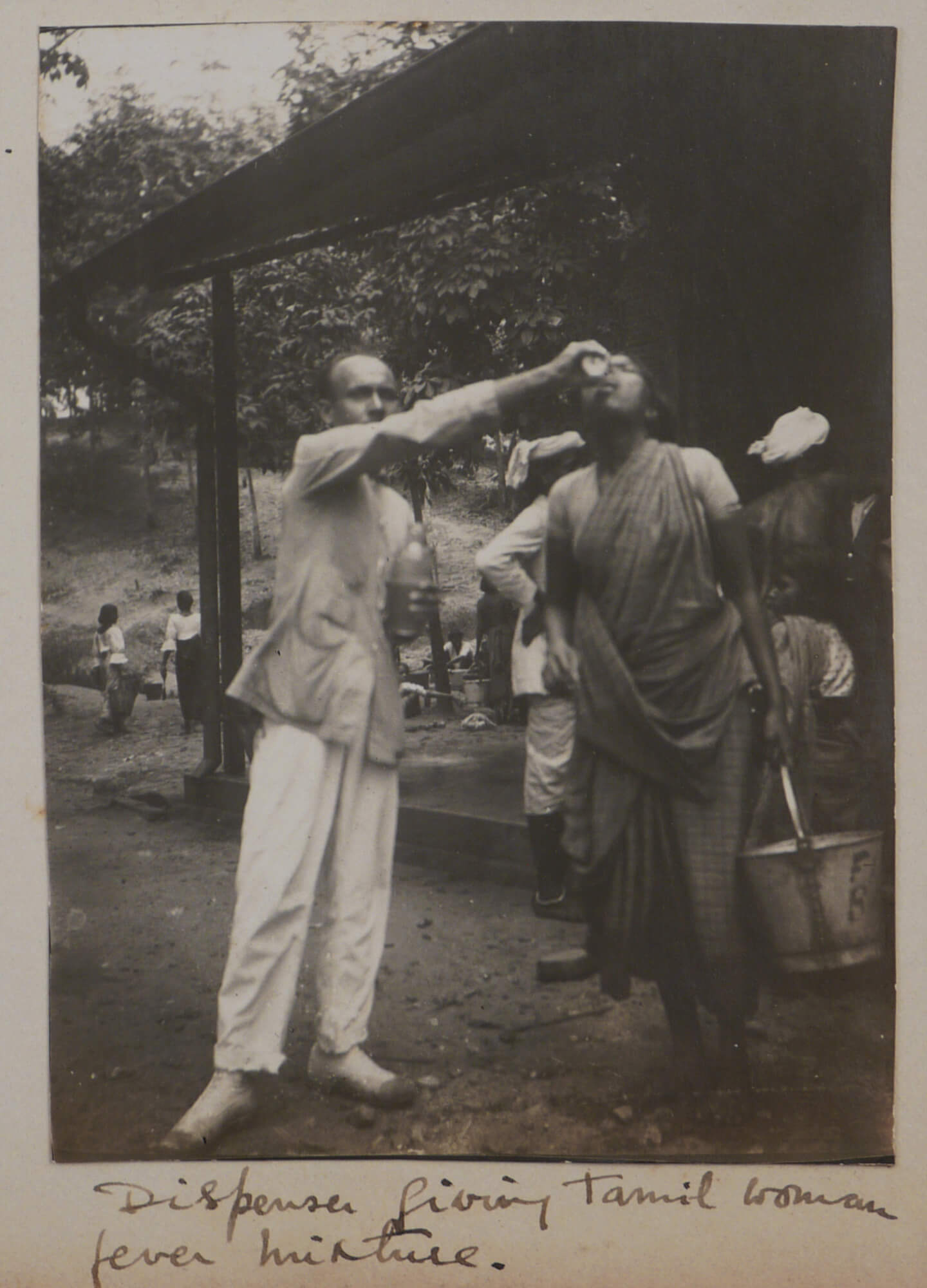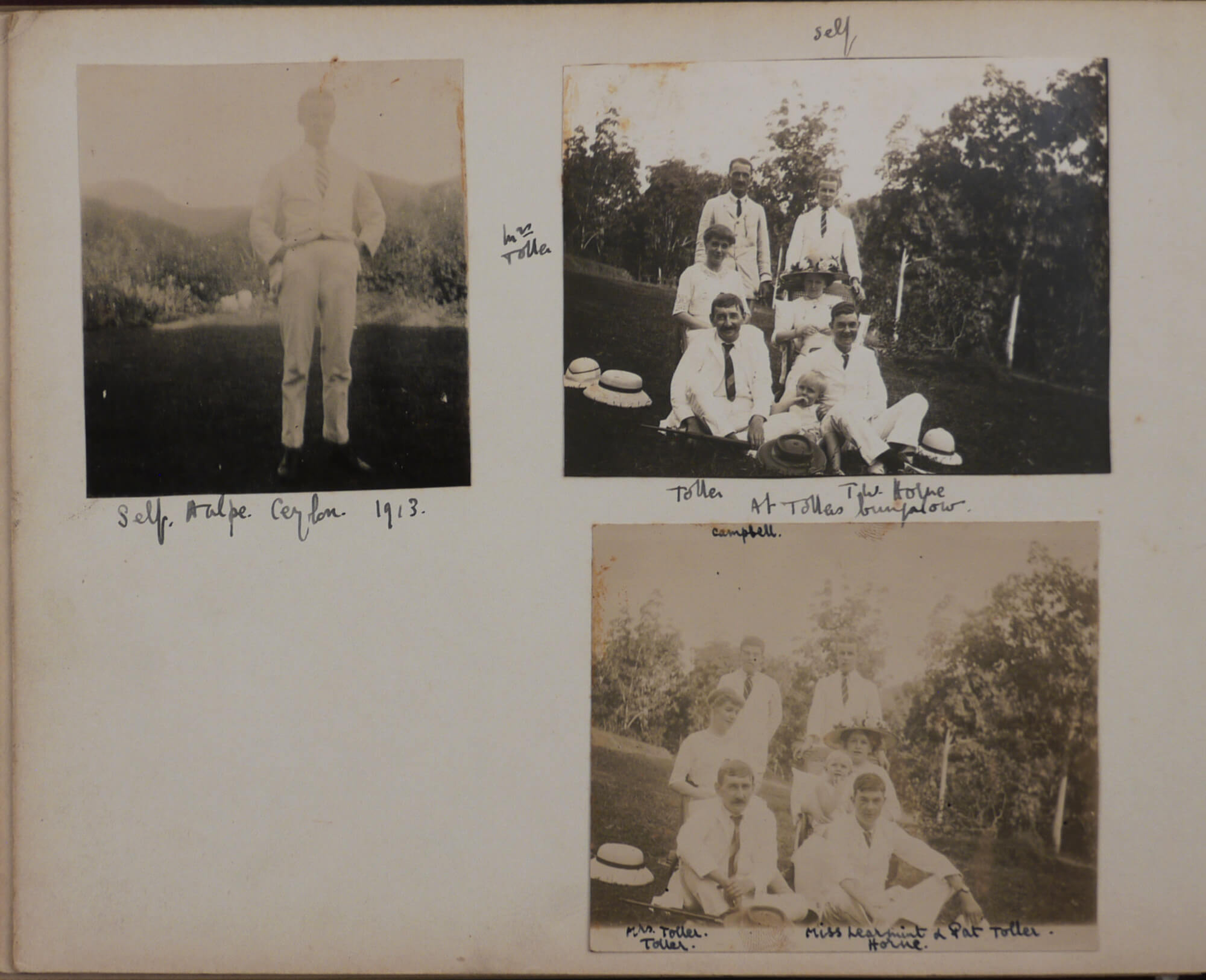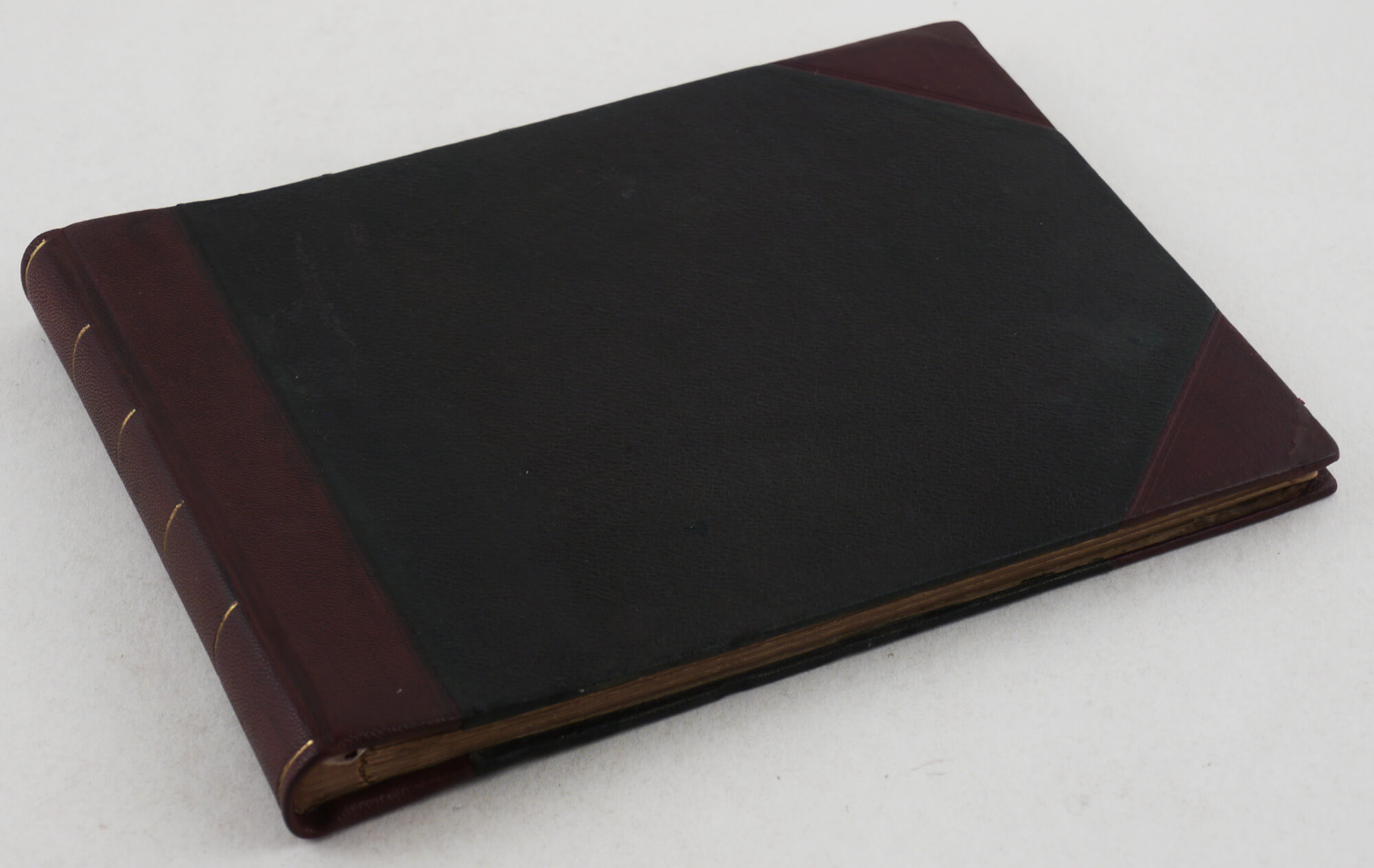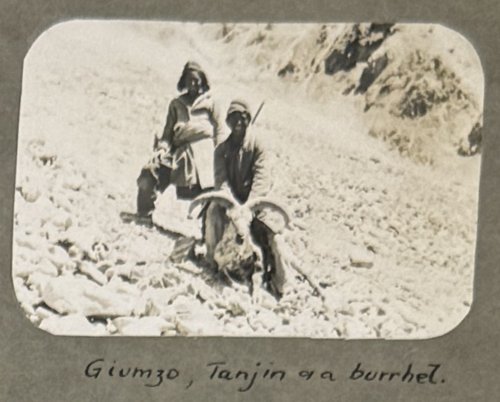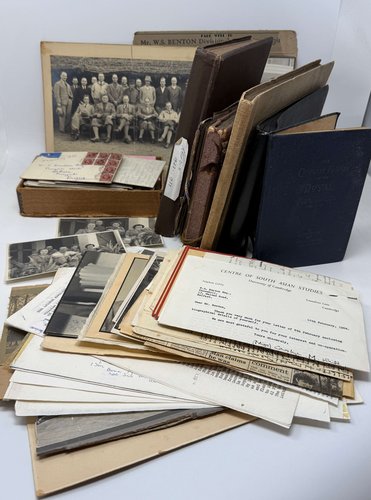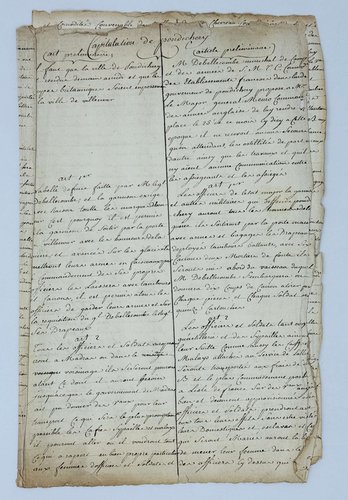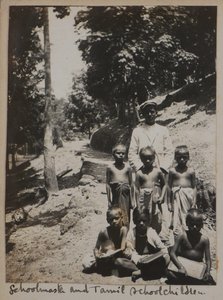
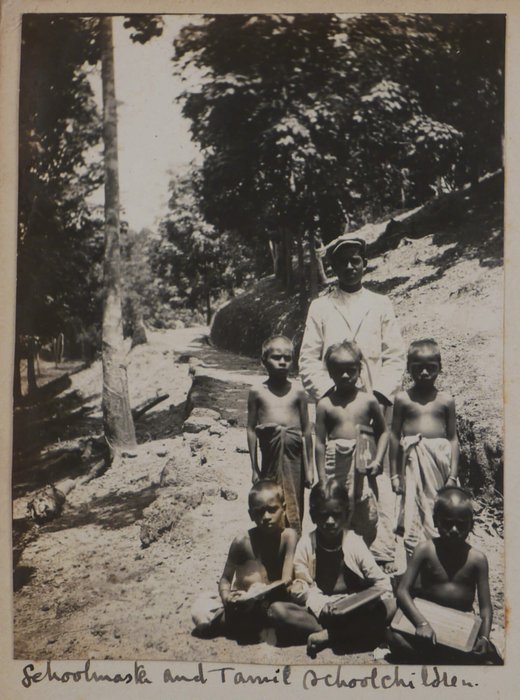

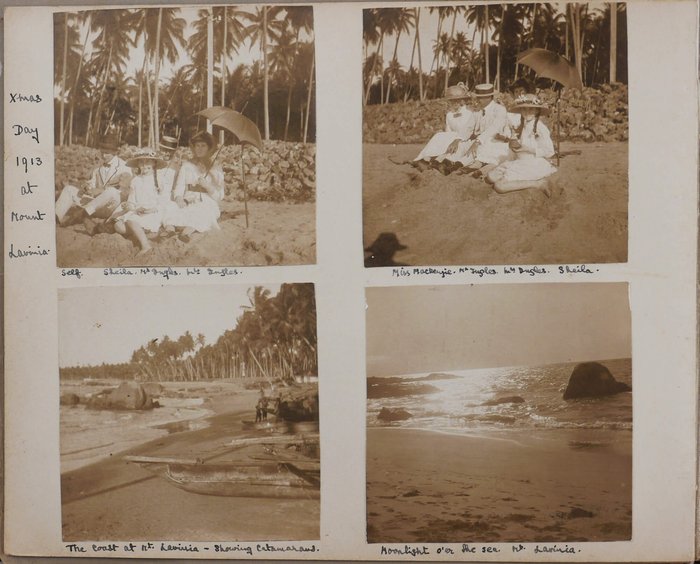
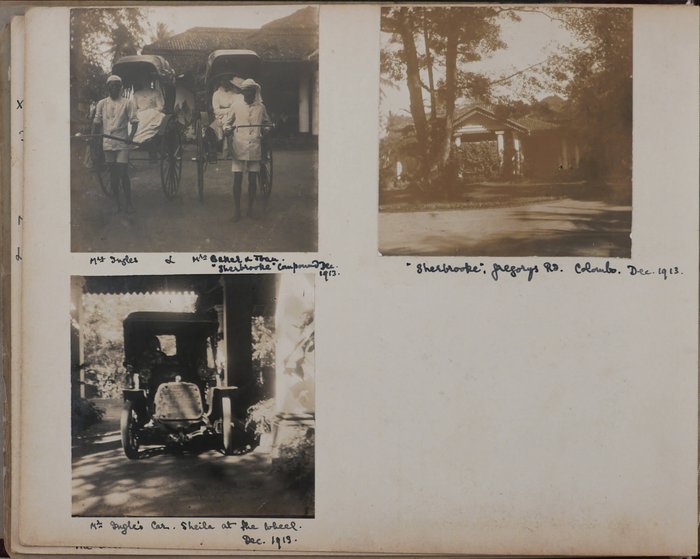
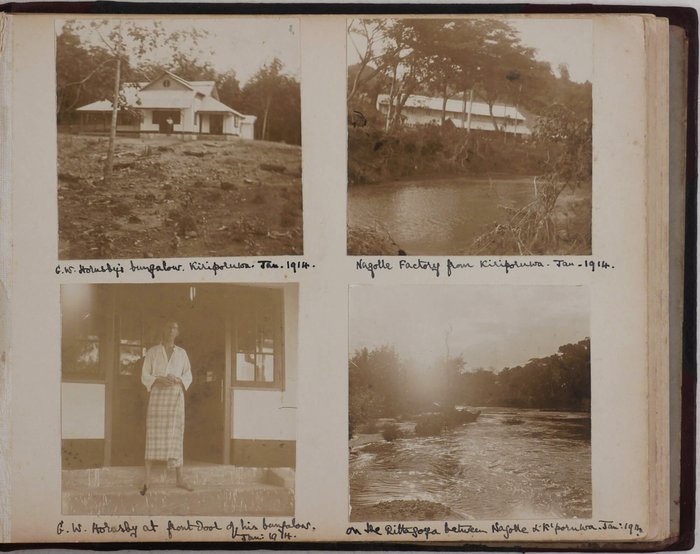





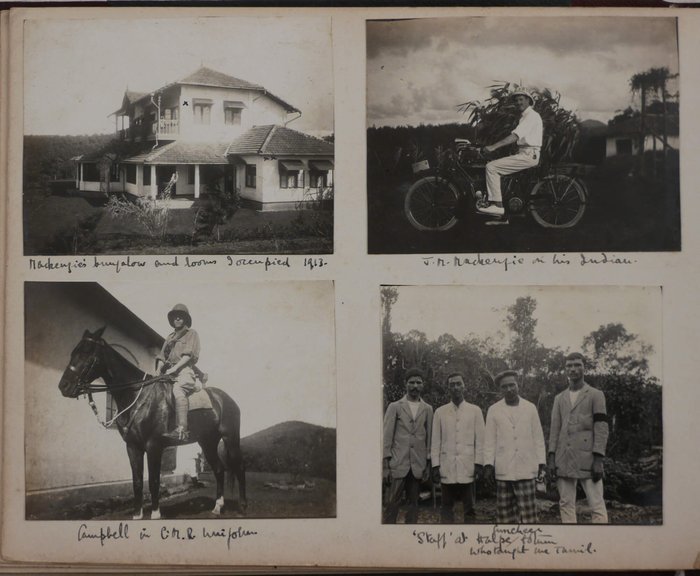

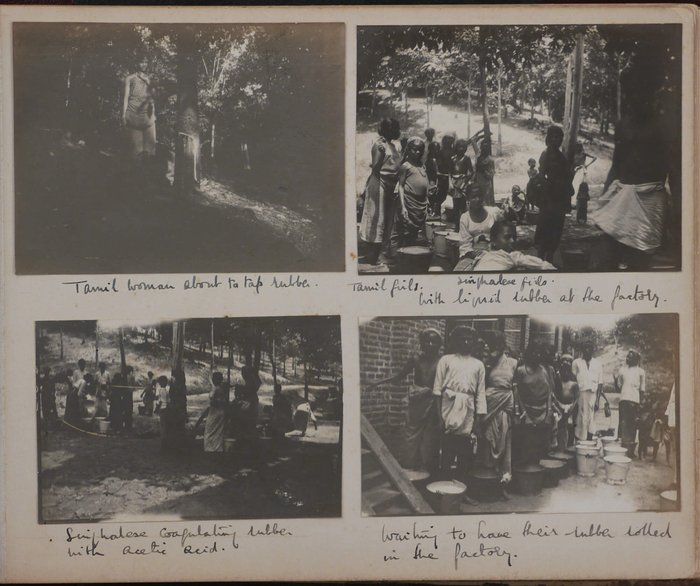


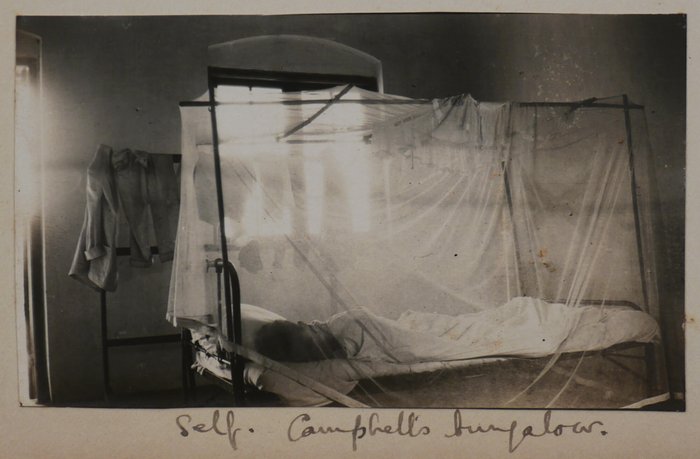


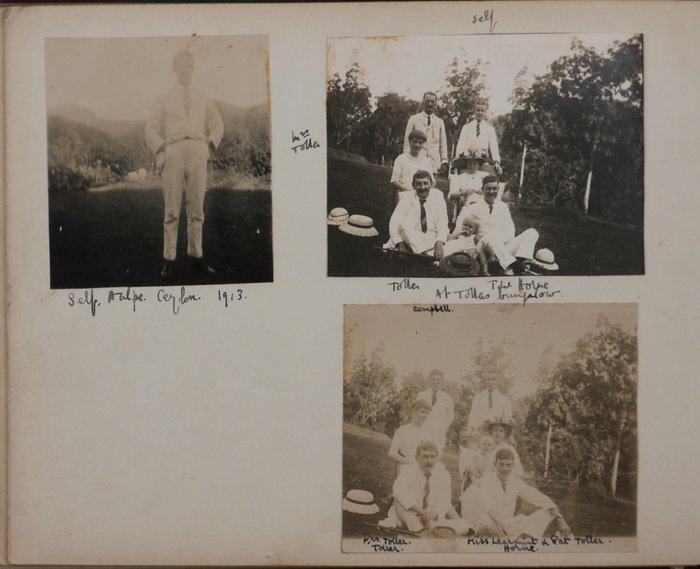
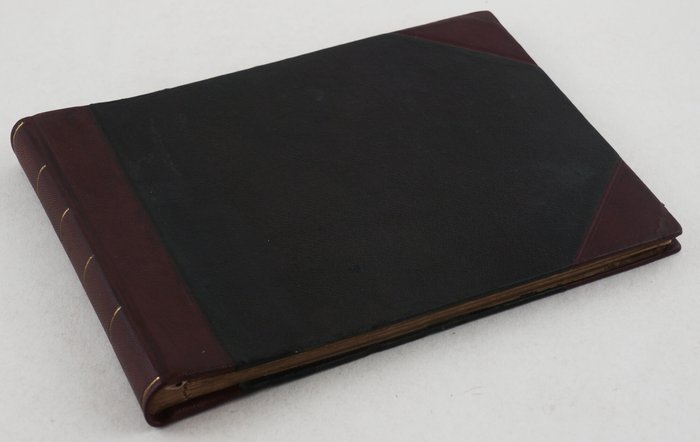
#PA97
1913-1914
Oblong Quarto album ca. 19,5x25 cm (7 ¾ x 9 ¾ in). 12 card stock leaves (5 blank). With 56 mounted gelatin silver photos of various size, from ca. 8,5x10,5 cm (3 ¼ x 4 ¼ in) to ca. 4x6 cm (6 ½ x 2 ½ in); most photos are ca. 8,5x8,5 cm (3 ¼ x 3 ¼ in). All photos with period ink captions on the mounts or the images, many also dated “1913” or “1914.” With nine mounted magazine or newspaper clippings, each ca. 7x9,5 cm (2 ¾ x 3 ¾ in). Original black cloth boards and maroon sheep corners, neatly rebacked with maroon morocco spine; original endpapers. A few photos mildly faded, but overall a very good album of interesting photographs.
Historically significant collection of original photographs of British-owned tea and rubber plantations in the Kelani Valley near Colombo in southwestern Sri Lanka. The photos were taken shortly before the beginning of WW1 by a young associate of the “Nagolle Rubber and Tea Plantations Ltd.,” which was established in 1910 and owned the estates in Para, Kiriporuwa, Manikande and Atalawa (The Times of Ceylon Green Book: A Directory of Ceylon. Colombo, 1921, p. 444). About eighteen images show the grounds of the “Nagolle Rubber and Tea Plantations Ltd.,” British managers L. Holbech and George Western Hornsby (1886-1915) and native workers: “G.W. Hornsby’s bungalow, Kiriporuwa, Jan. 1914,” “G.W. Hornsby in front of his bungalow, Jan. 1914;” “Nagolle factory from Kiriporuwa;” “At the Rittagoya between Nagolle & Kiriporuwa, Jan, 1914;” “L. Holbech’s bungalow in the jungle, Kiriporuwa, Jan. 1914;” “L. Holbech in interior of bungalow, Jan. 1914;” “L. Holbech & G.W. Hornsby, Kiriporuwa, Jan. 1914;” “View taken from the Kiriporuwa tea near L. H’s bungalow, Jan. 1914: Atalawa (rubber), Para (rubber), Nagolle (rubber), Kiriporuwa (rubber & tea);” “My bungalow under construction, Nagolle, Jan. 1914;” “The Nagolle turn off on Nuisawella Rd., Feb. 1914;” “The wire bridge over the Rittagoya between Nagolle & Kiriporuwa, Feb. 1914;” “Elephant on the Para Cart Rd. shewing young Nagolle rubber, Feb. 1914;” “The dining room of my bungalow, Nagolle, Feb. 1914.” There is also an interesting group portrait of native workers, dressed for a celebration (with all names captioned, including “Sandanam”, “Ramasamy”, and “Mookau”), and a portrait of “Carpaiah, Nagolle K.P., Feb. 1914.”
About twenty photos were taken on the Halpe estate of the “Ceylon Rubber Co. Ltd.,” also located in the Kelani Valley. The images include views of “Halpe big bungalows, Nov. 1913;” “View of tea, taken from Halpe Rd. turn;” portraits of the Halpe estate manager J.M. Mackenzie (in service; 1912-22) and assistant manager A.H.G. Campbell; “View of rubber & Mackenzies’ bungalow in distance;” “Mackenzies’ bungalow and rooms I occupied, 1913;” a scene with an elephant “transporting rubber, Halpe, Ceylon, 1913.” There are also several portraits of native workers, including “Morel, P. Ramasany, Factory [keeper?], 2nd Conductor, Hd. Conductor, <…> Halpe, Dec. 1913”; “Staff at Halpe <…> who taught me Tamil;” “Tamil woman about to tap rubber;” “Tamil girls, Singhalese girls with liquid rubber at the factory;” “Singhalese coagulating rubber with acetic acid;” “Waiting to have their rubber tolled in the factory;” “Schoolmaster and Tamil school children;” “Dispenser giving Tamil woman fever mixture;” “Singhalese girl tapping rubber”; “Campbell’s butler.” In addition, several photos portray the album’s compiler in Halpe, posing with a monkey, sleeping under the mosquito net, playing tennis in southern India, &c.
There are also eleven photos showing the compiler and his friends celebrating Christmas in Colombo in 1913, including scenes on the beach at Mt. Lavinia and in their house (Sherbrooke compound, Gregory’s Rd., Colombo), views of the “Sherbrook cottage” and portraits of “self,” “Sheila, Mr. & Mrs. Ingles, Miss Mackenzie, Mrs. Baker, Joan Baker,” a Sinhalese fisherman, &c.
Overall an interesting content-rich original source on the history of Sri Lankan rubber and tea plantations before WW1.




